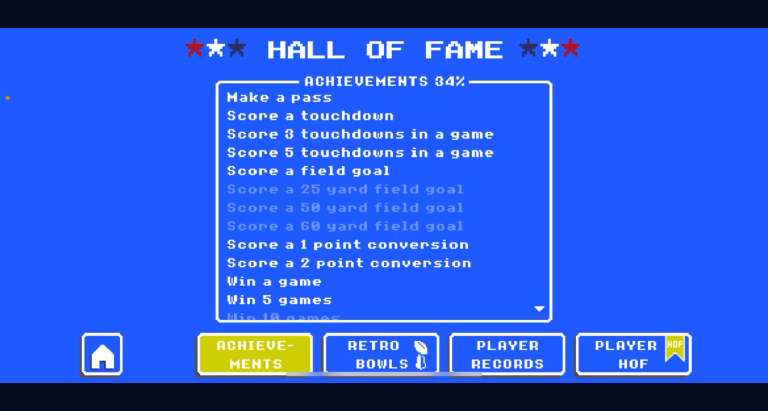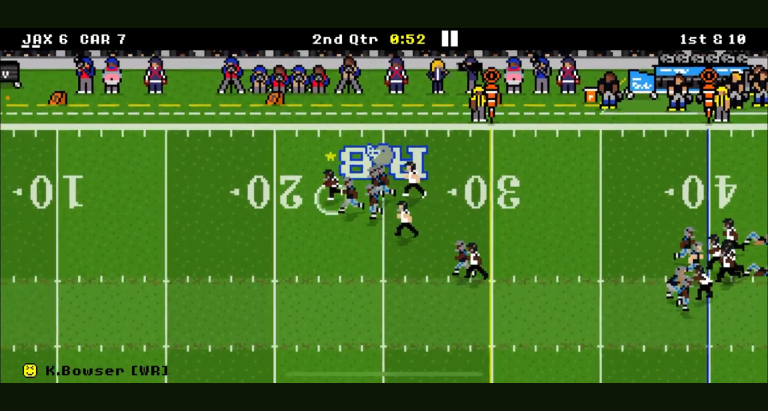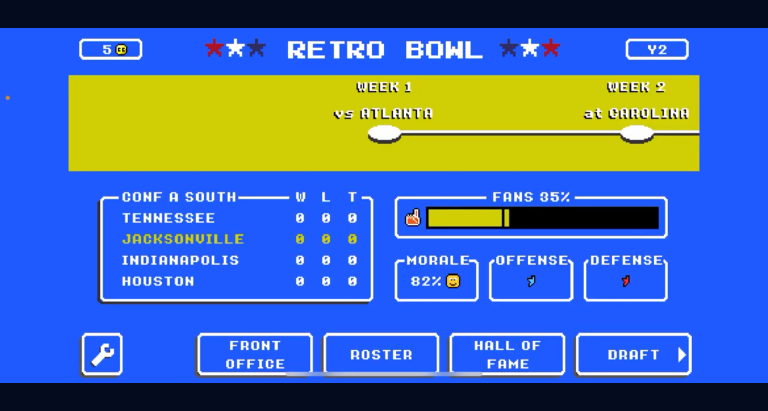Retro Bowl is a captivating mobile football game that combines nostalgia with modern gaming mechanics. Since its release, it has quickly gained a dedicated following due to its simple yet engaging gameplay and retro aesthetic that appeals to fans of classic sports games. Retro Bowl offers players the opportunity to manage their own football team, participate in leagues, and compete against others, making it a popular choice among football enthusiasts. But many gamers wonder: how do retro bowl leagues work? This article will delve into the intricacies of Retro Bowl leagues, from setting them up to success strategies, enhancing your gaming experience and community engagement.
Overview of Retro Bowl
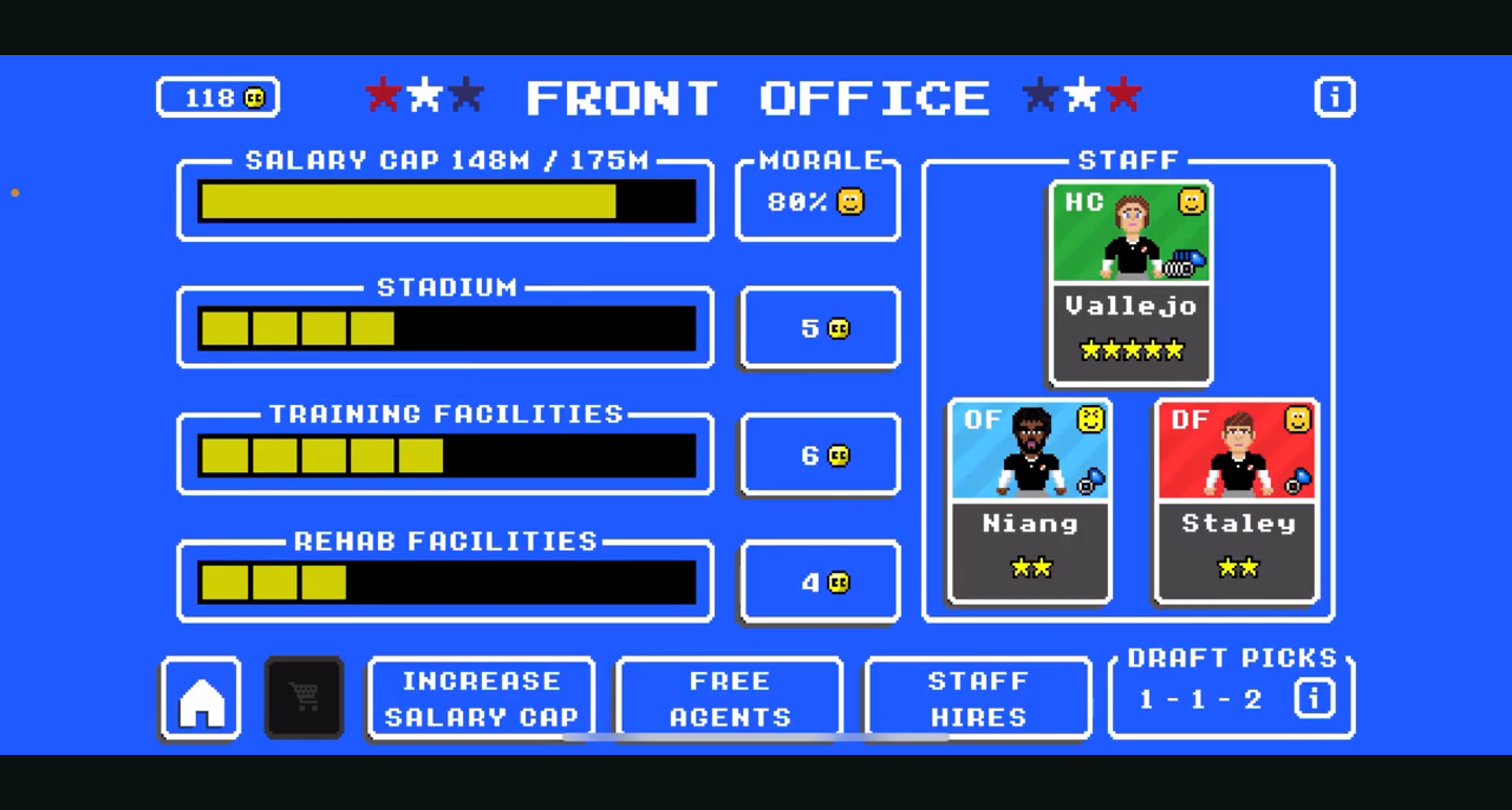
Overview of Retro Bowl
Retro Bowl focuses on a simplified version of American football, allowing players to take control of the game while managing their team’s roster and strategy. Players are drawn to its unique blend of pixelated graphics and addictive gameplay, creating a nostalgic experience reminiscent of classic sports video games. Its easy accessibility on mobile platforms also contributes to its widespread appeal, enabling players to pick it up and play anywhere, anytime.
Purpose of Retro Bowl Leagues
The primary purpose behind creating Retro Bowl leagues is to foster a strong community around the game. Players can engage with one another on a competitive level, sharing strategies, stories, and experiences. How do retro bowl leagues work in building this community? Through structured gameplay and interactions, leagues create a sense of belonging, and friendly rivalry motivates players to improve their skills while enjoying the camaraderie.
Setting Up a Retro Bowl League
Choosing the Right Platform
To get started, one must choose the right platform for gameplay. Retro Bowl is available on both mobile devices and consoles, but mobile is the most popular due to its accessibility. When deciding which platform to use, consider compatibility with the players involved. Not all players may have access to the same console, which can limit participation. Thus, the mobile app is often the preferred choice to maximize player involvement.
Inviting Players
To form a successful Retro Bowl league, you need to invite players. You can recruit friends who share your interest in football or venture into online communities to find participants. Establishing the size and structure of your league is crucial; consider factors such as how many teams want to join and their level of experience. Aim for a balance that keeps games competitive yet enjoyable for all involved.
League Rules and Settings
Creating a cohesive league requires clear rules and settings. This includes drafting players, where each team selects their members, and establishing a scoring system to ensure fair play. Typical settings may involve scheduling games a few times a week to maintain engagement and excitement. Setting a timeline for drafting, game schedules, and playoffs helps keep the league organized.
Format of the League
League Types
Leagues can be categorized into various types, which can significantly influence how they operate. Casual leagues focus on fun and enjoyment, while competitive leagues emphasize skill and strategy. Additionally, formats like single-elimination tournaments or round-robin structures can determine how teams compete against one another and progress through the season.
Scheduling Games
Establishing a consistent schedule for games is essential for any football league. Regularity helps players plan accordingly and keeps the excitement alive. Open communication with fellow league members allows for flexibility, as schedules can often change. Utilize scheduling tools like Google Calendar or Discord to manage game dates and send reminders.
Playoffs and Championship
Understanding how playoffs and championships are structured is critical. Most leagues design playoffs to heighten competition as teams vie for the championship title. Typically, the top-performing teams will enter a playoff bracket, where they compete to determine the overall champion. Rewards for winning, whether in-game items or league recognition, can enhance the competitive spirit and encourage players to stay engaged.
Gameplay Mechanics in Retro Bowl
Game Controls and Features
Mastering Retro Bowl’s gameplay mechanics is fundamental to success. The game employs simple controls that allow players to pass, run, and score effectively. Unique gameplay elements, such as player progression, where athletes improve their stats after matches, provide depth to strategy and team management.
Managing Your Team
When it comes to team management, drafting strategies are essential. Building a diverse roster with a mix of skilled players maximizes your chances of success. Additionally, managing player stats and dealing with injuries are crucial aspects to consider throughout the league. Neglecting these elements can put your team at a disadvantage.
Scoring and Points System
Understanding how scoring works in Retro Bowl is vital for competitive play. Points can be earned through touchdowns, field goals, and safeties, among other methods. Structuring your gameplay around maximizing these scores can significantly influence your team’s success over the season.
Engaging with the Community
Communication Platforms
Engagement with fellow players extends beyond the game itself. Utilizing platforms like Discord or Reddit allows for ongoing discussions around league events, strategies, and experiences. Establishing channels for regular updates fosters a more connected community, enriching the overall experience for everyone involved.
Sharing League Results
Keeping track of statistics and standings can enhance the competitive element of your league. Using platforms like Google Sheets or creating a simple league website enables easy access to these updates. Leveraging social media to share progress and results can also stimulate participation and enhance interest.
Organizing Events and Challenges
Seasonal tournaments and special events within your league can invigorate interest and participation. Additionally, offering prizes and recognition for outstanding performances can serve as motivation for players to engage more thoroughly in the league. Creating fun challenges or themed game days can make for a memorable experience.
Tips for Success in Retro Bowl Leagues
Strategies for Winning
To navigate the competitive landscape of Retro Bowl leagues, developing effective play-calling and strategic decision-making skills is essential. Understanding your opponents’ strengths and weaknesses will give you an edge. Analysing past games and adapting your strategy based on observed patterns can enhance your team’s performance.
League Etiquette
Maintaining a sense of sportsmanship is vital in any league. Promoting friendly competition while respecting your opponents creates an enjoyable atmosphere. If disputes arise, addressing them amicably can ensure that everyone enjoys their time in the league, fostering a positive overall experience.
Staying Active and Engaged
Active participation is critical to maintaining interest in your Retro Bowl league. Regular communication and organizing league events help keep everyone engaged. Implementing motivational strategies such as team-building exercises or challenges can encourage players to remain invested in their league experience.
Conclusion
Recap of Key Points
In summary, understanding how do retro bowl leagues work involves grasping the setup, gameplay mechanics, and community engagement necessary for a successful league. A good balance between competition and camaraderie can lead to a rich gaming experience for all involved.
Encouragement to Join or Start a League
If you’re intrigued by the idea of joining a Retro Bowl league or thinking of starting one, now is the time. Embrace the competitive spirit and community of Retro Bowl leagues, and enjoy the thrill of football in a fun, retro package.
| Aspect | Description | Importance |
|---|---|---|
| Platform Selection | Mobile vs Console | Crucial for accessibility |
| League Structure | Size & Composition | Affects competitiveness |
| Game Scheduling | Frequency & Noticing | Maintains player engagement |
| Playoff Systems | Format & Rewards | Enhances competition level |
| Community Engagement | Communication Platforms | Builds a connected league |
FAQ
1. What are Retro Bowl leagues?
Retro Bowl leagues are community-driven groups in which players compete against each other in the Retro Bowl game, focusing on collaboration and competition.
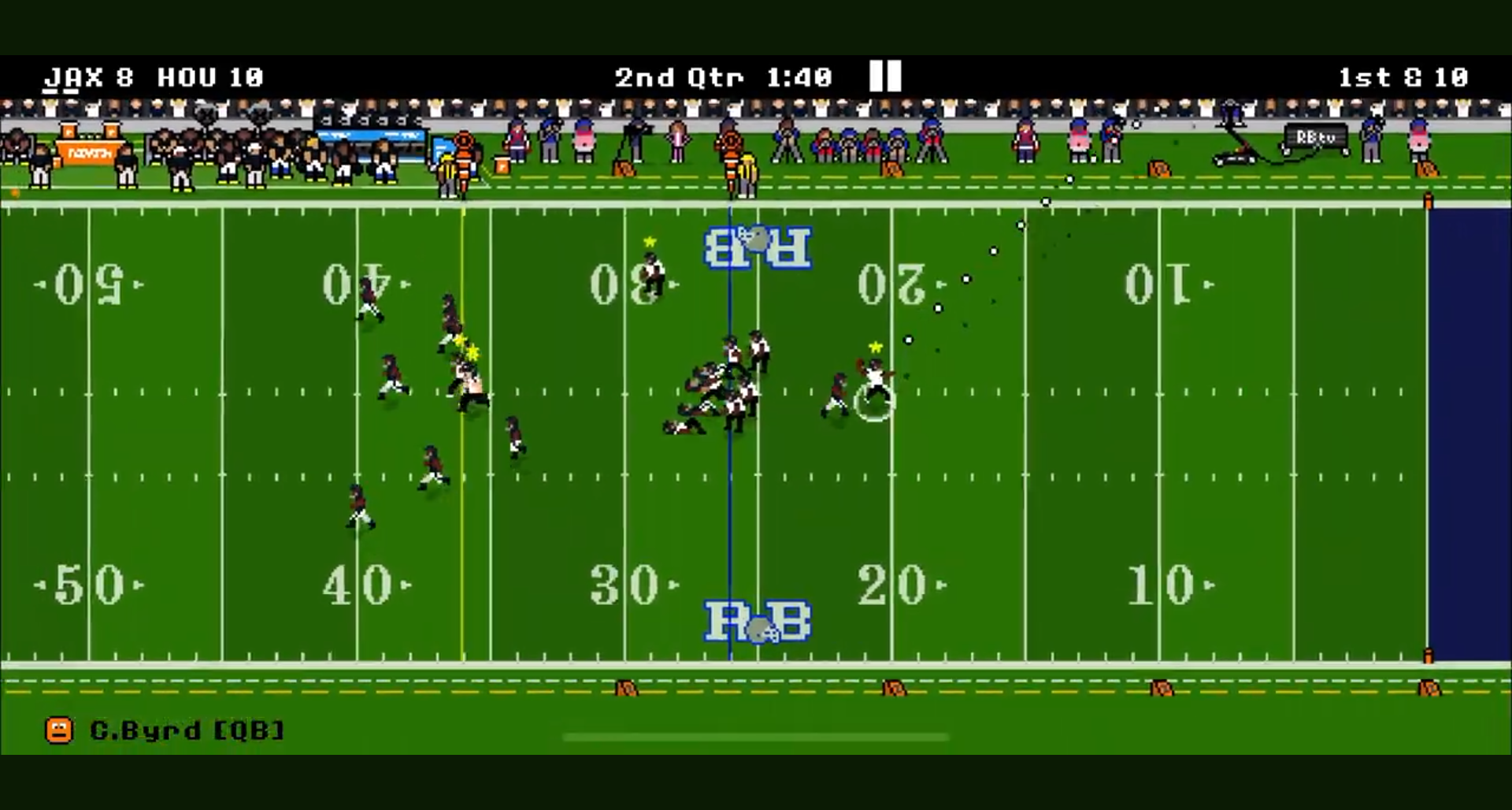
2. How do you set up a Retro Bowl league?
To set up a Retro Bowl league, choose a platform, invite players, and establish league rules and scheduling before starting your season.
3. What is the best way to invite players to my league?
You can invite friends or recruit players from online forums and communities related to Retro Bowl or general gaming.
4. What types of league formats can I use?
Leagues can be casual or competitive, adopting formats like single-elimination, round-robin, or a mix of both.
5. How can I keep track of league stats?
Using platforms like Google Sheets or a dedicated website can help manage standings and statistics efficiently.
6. What is the importance of league etiquette?
Promoting sportsmanship and addressing disputes amicably can greatly enhance the fun and enjoyment of all participants in the league.
7. How can I engage with the community outside of gameplay?
Utilizing communication platforms like Discord or social media allows you to foster discussion, celebrate accomplishments, and share updates.
8. Are there any rewards for league winners?
Many leagues offer prizes or recognition to winners, enhancing the competitive spirit and motivation to engage fully.
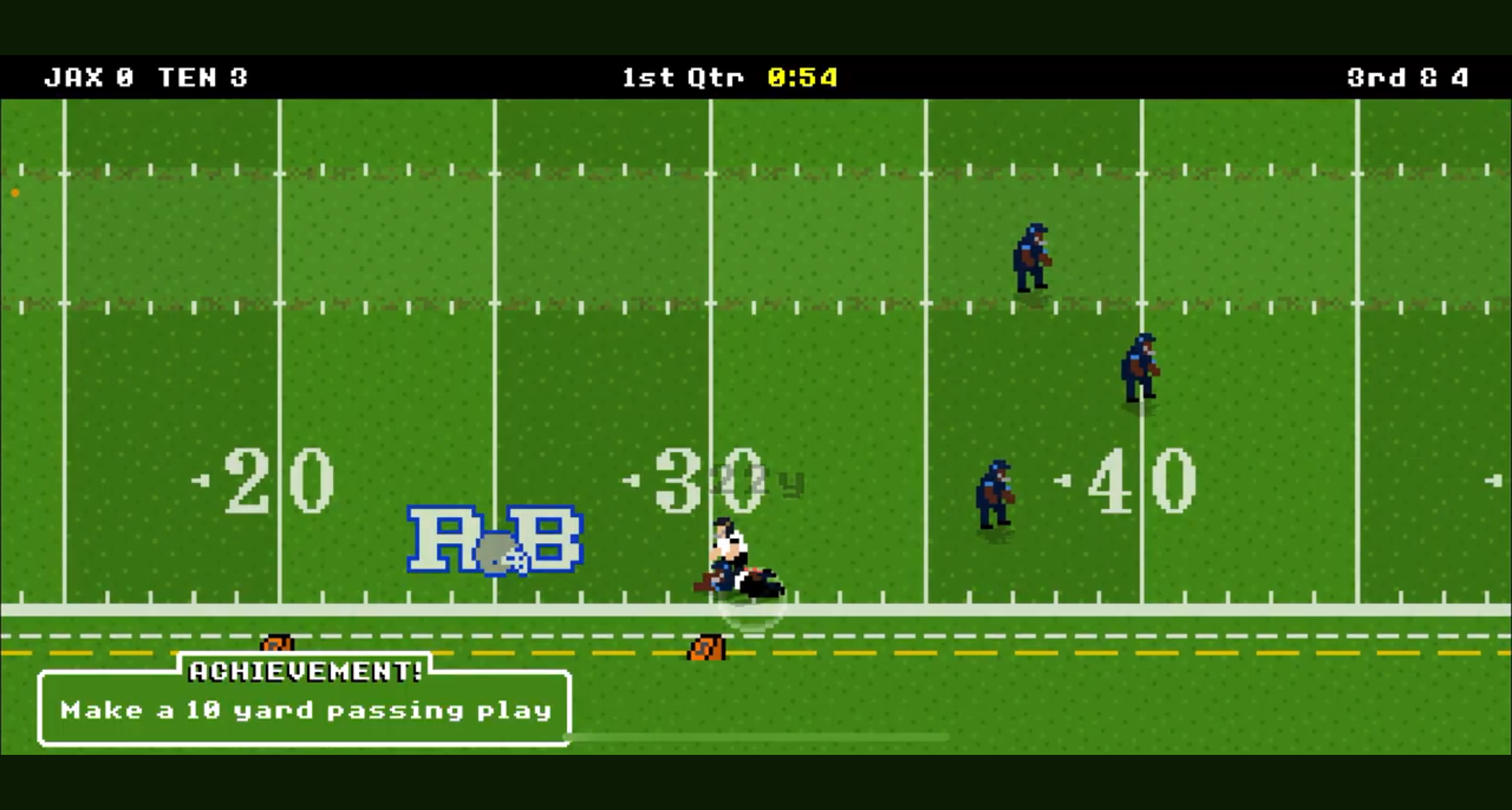
9. What strategies can I employ for winning in Retro Bowl?
Focus on effective play-calling, understanding opponent strategies, and optimizing team management to enhance your chances of winning.
10. Can I organize events within my Retro Bowl league?
Yes, organizing seasonal tournaments or themed events can increase engagement and enjoyment for all league members.
